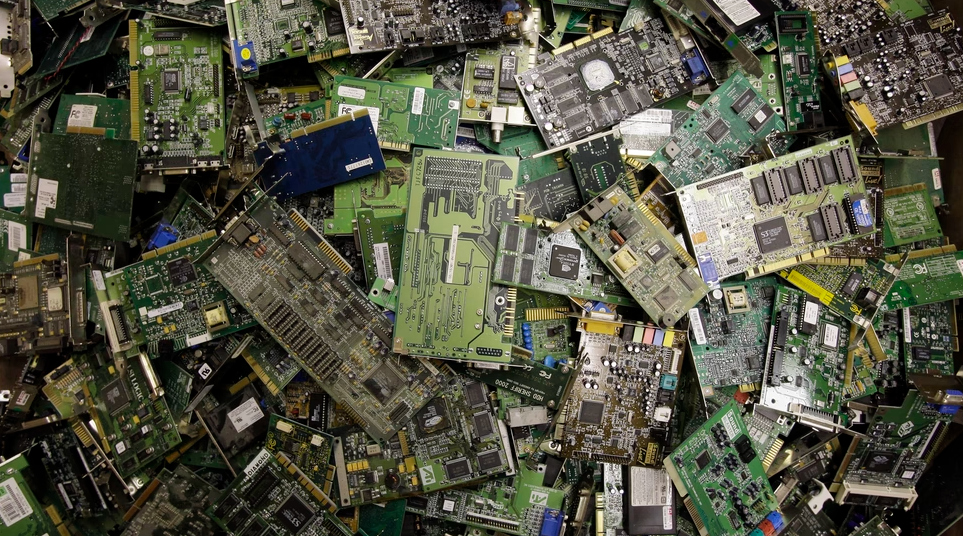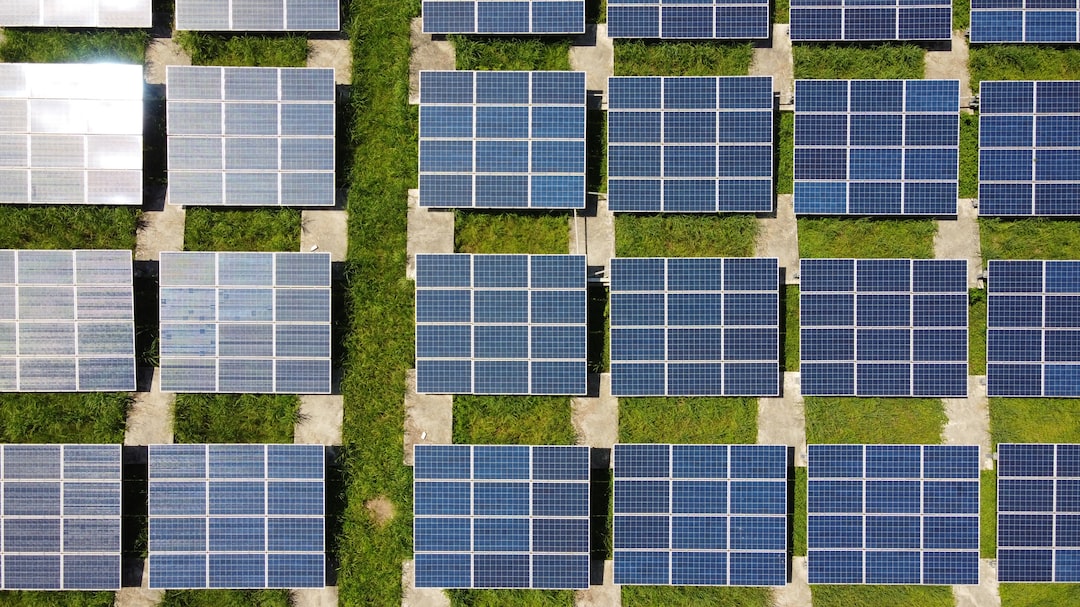|
|
We Reviewed. You Benefit.
Get Insider Access to Discounts on Top Sustainable Brands We've Reviewed Just for You! WEEKLY!
If there’s one thing that is certain in today’s world, it’s the pressing need for technological advancements that promote sustainability and protect our planet. With environmental issues becoming more prevalent, the demand for green technology innovation is increasing rapidly.
Fortunately, brilliant minds are stepping up to the challenge and developing groundbreaking solutions to tackle these problems head-on. In this article, we will explore the top 10 green technology innovations that are revolutionizing our lives and paving the way for a more sustainable future.
What are Green Technologies?
Green technologies, also known as clean technologies or environmental technologies, refer to a range of products, techniques, and processes designed to provide sustainable solutions while minimizing the negative environmental impact.
It can be eco-friendly in how it’s made or supplied. Green tech can also mean using clean energy sources, like solar or wind power, or using fuels that are better for the environment than traditional ones. Overall, it’s about finding ways to protect the planet and reduce harm to nature.
How Do Green Technologies Help Protect the Environment?
Green technologies play a crucial role in protecting the environment by reducing greenhouse gas emissions, promoting renewable energy sources, and minimizing the use of fossil fuels. We can significantly reduce our carbon footprint and lessen our dependence on non-renewable energy sources by harnessing renewable energy sources like solar and wind power.
There are numerous examples of green technologies that are making a positive impact on the environment. One of the most well-known examples is solar energy, which utilizes photovoltaic cells to convert sunlight into electricity. Electric vehicles are another prominent example, helping to reduce carbon emissions and decrease the reliance on fossil fuels.
What are the Top 10 Green Technology Innovations?
Innovation #1: Solar Desalination
An example of solar energy-inspired technology is solar desalination. It’s a green innovation that ranks among the top 10 eco-friendly advancements. Utilizing solar energy to desalinate salt water offers a promising solution to water shortages, desertification, and hunger.
Solar energy is one of the most promising and widely implemented green technologies. It involves using solar panels to convert sunlight into electricity, reducing the reliance on fossil fuels and significantly reducing carbon dioxide emissions. Solar energy systems can be used in both residential and commercial settings, making it a versatile and renewable energy source.
Companies like Elemental Water Makers are already implementing solar desalination projects worldwide, providing affordable, safe, reliable, and fossil-free water to those in need.
Watch here on how solar desalination works:
Innovation #2: Green Architecture

Green architecture, also known as sustainable or eco-friendly architecture, is an approach that focuses on designing buildings with minimal negative impact on the environment. It aims to use resources efficiently, reduce waste, and create energy-efficient, healthy, and comfortable spaces for occupants. By integrating features like proper insulation, energy-efficient lighting, and renewable energy systems, green architecture can significantly reduce energy consumption and carbon emissions associated with buildings.
Many global companies have embraced green architecture in their commitment to sustainability. Apple Park has the largest naturally ventilated building and uses solar panels. Googleplex features an energy-efficient design with smart lighting and HVAC systems, while Microsoft’s campus includes green roofs, rainwater harvesting, and waste reduction initiatives. These companies lead by example in reducing environmental impact through eco-friendly construction practices.
Innovation #3: Vertical Farming and Hydroponics

Vertical farming and hydroponics are green technologies revolutionizing agriculture. They enable consistent production of high-quality food in limited spaces and challenging climates.
Vertical farming stacks plants in columns or shelves, optimizing space and controlling the climate. Hydroponics uses LED lighting and artificial nutrients to grow plants in water or an inorganic substrate without soil. Combining both methods offers a sustainable solution for urban areas, reducing the need for transportation and supporting local food sources like microgreens for nearby restaurants.
Innovation #4: Wind Power

Wind power is a renewable energy source that uses the wind to make electricity, and it’s quickly becoming a big part of our clean energy future. As technology improves, wind power is getting more efficient and widespread. It has immense potential as a renewable energy source. With the advancement of wind turbine technology, we can harness the power of the wind to generate clean electricity on a larger scale. Wind farms located in areas with high wind speeds can contribute significantly to the global transition towards a greener energy mix.
One cool development is offshore wind farms. These are vast groups of turbines built in the sea where the wind is stronger and steadier than on land. By harnessing this mighty wind, offshore farms can produce much electricity, reducing greenhouse gases and our need for fossil fuels. Watch how it works here: https://youtu.be/El4kHkJ7ITs
Innovation #5: Electric Vehicles

Transportation is a major source of environmental pollution, mainly due to fossil fuel-powered vehicles emitting CO2 into the atmosphere. However, the shift towards green cars offers hope for a cleaner future.
Electric vehicles, or EVs, are another remarkable green technology innovation. Using electricity as their primary power source instead of gasoline or diesel, EVs produce zero tailpipe emissions, reducing the overall carbon emissions from transportation. With advancements in battery technology, EVs are becoming more accessible and practical for everyday use.
Companies like Tesla are leading the way in accelerating the transition to sustainable energy, offering electric vehicles that are not only environmentally friendly but also provide a better and more enjoyable driving experience than traditional gasoline cars.
Innovation #6: Plant-based Packaging

Plant-based packaging offers a sustainable alternative to plastic, a significant contributor to plastic waste and microplastics in our oceans. While there have been concerns about using land to grow raw materials for plant-based plastics, new developments focus on using waste rather than specific plants for production.
An excellent example of this green technology is Avantium, a Dutch company that produces 100% recyclable and degradable plant-based plastic called polyethylene furoate (PEF). Unlike traditional petroleum-based plastics, PEF is made entirely from bio-based feedstocks like sugars extracted from sugar beet, sugar cane, wheat, corn, and agricultural residues. Avantium’s PEF has shown a significant greenhouse gas reduction potential, making it a promising choice for environmentally friendly packaging materials in various industries, including packaging, textiles, and plastic films.
Innovation #7: Sustainable Phones

Smartphones have a significant environmental impact due to CO2 emissions and harmful materials like lead and mercury. However, companies like Fairphone and Teracube are tackling these issues by designing smartphones with lower environmental impact and a focus on social responsibility.
Fairphone aims to create phones without conflict minerals, ensure fair labor conditions, and increase device durability. Teracube, on the other hand, offers a 4-year guarantee and replaceable components using biodegradable chassis and recycled packaging. Both companies follow sustainable practices, making their phones better choices for a greener future.
Innovation #8: E-waste Recycling

E-waste, which includes unwanted or non-working electronics, fills up landfills and can release harmful materials into the environment. However, these discarded electronics also contain valuable resources like precious metals that can be recycled and reused. To tackle this issue, advancements in e-waste recycling are being made.
Current e-waste recycling methods require manual disassembly of devices, which can be dangerous for workers due to exposure to hazardous substances. Automated processes are being developed to dismantle and sort electronic waste components to address this efficiently. This helps make e-waste recycling safer and more effective. Watch how electronic waste gets recycled here: https://youtu.be/S2lmPIa1iWE
Innovation #9: Carbon Capture and Storage Technology

Carbon Capture and Storage (CCS) technology is crucial for reducing carbon dioxide emissions from industrial processes and power plants. It works by capturing CO2 before it is released into the atmosphere, transporting it, and storing it underground to prevent it from contributing to the greenhouse effect and mitigating climate change.
Many companies are actively adopting and investing in CCS technology to combat climate change and decrease their carbon footprint. Major players like ExxonMobil and Shell are heavily involved in CCS research and development, implementing various projects to capture and store CO2 from their operations and industrial processes.
Equinor, a Norwegian energy company, is also engaged in CCS initiatives, with several pilot projects focused on capturing CO2 from different sources. Additionally, Occidental specializes in enhanced oil recovery (EOR) using captured CO2 to improve oil extraction and store the CO2 underground.
These companies and many others recognize the significance of CCS technology in the battle against climate change. They are taking significant steps to incorporate it into their sustainability strategies, positively contributing to a greener and more sustainable future.
Innovation #10: Nuclear Energy and Fuel Cells

Nuclear energy is often considered a controversial topic in discussions about green technologies. While nuclear energy does not produce greenhouse gas emissions during electricity generation, it poses challenges in terms of waste management and potential safety risks. However, with advancements in nuclear technology and proper safety measures, nuclear energy can contribute to a low-carbon energy mix.
Likewise, fuel cells are another exciting area of green technology development. Fuel cells generate electricity through a chemical reaction between hydrogen and oxygen, with water as the only byproduct. As hydrogen production becomes more sustainable, fuel cells can provide a clean and efficient energy source for various applications, including transportation and power generation.
How do Green Technologies Contribute to a Sustainable Future?
Reducing carbon footprint with renewable energy
One of the primary ways green technologies contribute to a sustainable future is by reducing our carbon footprint using renewable energy sources. As mentioned earlier, solar and wind power are examples of renewable energy sources that do not produce harmful greenhouse gas emissions. We can mitigate climate change and promote a greener future by transitioning to these clean energy sources.
The environmental impact of green technologies
Green technologies have a positive environmental impact by reducing pollution and minimizing the use of non-renewable resources. For instance, solar energy systems produce electricity without emitting harmful pollutants, while wind turbines generate clean energy without depleting natural resources. By adopting these technologies on a larger scale, we can protect fragile ecosystems and preserve biodiversity.
The role of recycling in sustainability
Recycling is crucial in achieving sustainability as it helps conserve resources and reduces waste. When we recycle materials, we reduce the need for extracting raw materials from the Earth, saving energy and reducing the associated environmental impact. Additionally, recycling promotes a circular economy, where materials are reused or repurposed instead of discarded as waste.
FAQ
As we look ahead to the future, several green technology advancements are expected to shape how we live and interact with the environment. In 2023, we can anticipate further improvements in renewable energy technologies, such as more efficient solar panels and advanced wind turbines. These developments will contribute to greater adoption of clean energy sources and further reduce carbon emissions.
The top 10 green technology innovations include solar desalination, green architecture, vertical farming and hydroponics, wind power, electric vehicles, plant-based packaging, sustainable phones, e-waste recycling, carbon capture and storage technology, nuclear energy and fuel cells.
Green technology can help us reduce our environmental footprint and address environmental issues by using science and technology to develop innovative solutions that promote sustainable practices and reduce the use of resources.
One example of a green technology innovation is solar panels, which harness the sun’s power to generate electricity in a renewable and environmentally friendly way.
Green technology aims to reduce negative environmental impacts by promoting clean and renewable energy sources, minimizing waste generation, reducing emissions, and implementing sustainable practices in various industries.
Vertical farming is a green technology that allows for the cultivation of crops in vertically stacked layers or structures. It reduces the land required for farming, conserves water usage, and minimizes the need for pesticides or herbicides.
Green technology can be applied in waste management through the implementation of recycling programs, the use of composting techniques, the development of waste-to-energy technologies, and the promotion of sustainable consumption practices.
Carbon capture and storage (CCS) is a green technology that involves capturing carbon dioxide emissions from industries or power plants and storing them underground or utilizing them for other purposes to prevent their release into the atmosphere.
Green technology promotes using renewable energy sources such as wind power, solar energy, solar, and geothermality. This reduces reliance on fossil fuels and helps to mitigate climate change.
Green technology can help reduce our environmental footprint by developing energy-efficient technologies, promoting sustainable practices, encouraging renewable energy sources, and implementing waste reduction strategies.
Yes, green technology has the potential to change the world by providing innovative solutions to environmental challenges, reducing carbon emissions, promoting sustainable development, and creating a more sustainable and greener future.
Takeaway
In conclusion, the Top 10 Green Technology Innovations offer promising solutions to address various environmental challenges. From renewable energy sources like solar and wind power to advancements in recycling and sustainable agriculture, these innovations are driving us toward a greener and more sustainable future.
Companies and individuals embracing these technologies play a vital role in reducing our carbon footprint and protecting our planet for future generations. As we continue to invest in and adopt these green technologies, we move closer to a world where economic growth and environmental conservation go hand in hand.












